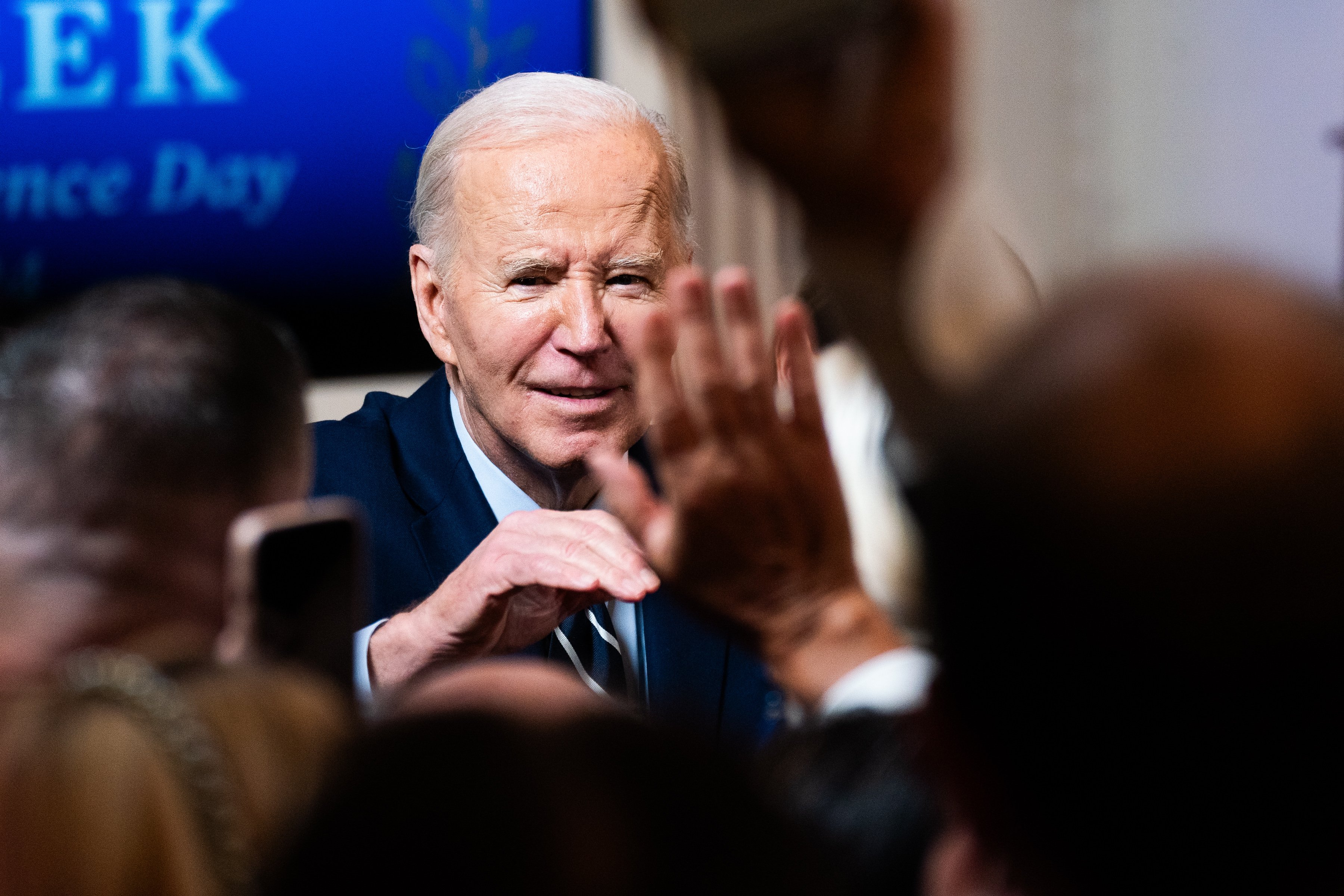Biden makes another pitch for student loan relief, but challenges loom

President Joe Biden unveiled plans to forgive some or all student loans for more than 30 million Americans on Monday. (Demetrius Freeman/The Washington Post)
President Biden on Monday laid out plans to forgive some or all student loans for more than 30 million Americans, trying to expand on his administration’s work to reduce debt burdens but offering a narrower path for forgiveness than a plan struck down by the Supreme Court last year.
One far-reaching component would forgive up to $20,000 in interest for federal student loan borrowers whose balances have ballooned because of unpaid interest, a move that the White House estimates could benefit 25 million people and that could take effect as soon as this fall. Other aspects of the debt plan, which probably will not be finalized for months, would take effect next summer.
“Today, too many Americans, especially young people, are saddled with unsustainable debts in exchange for [a] college degree,” Biden said at an event at a college in Madison, Wis. “The ability for working- and middle-class folks to repay their student loans has become so burdensome that a lot can’t repay it for even decades after being in school.”
Biden’s announcement sought to reaffirm his goal of easing the burden of college debt, an issue that could help energize his base ahead of a tough matchup this fall with former president Donald Trump. Since taking office, the administration has approved $146 billion in loan forgiveness for 4 million public servants, defrauded students, disabled borrowers and other groups already entitled to cancellation by adjusting existing relief programs.
But Biden has faced regular attacks on his debt cancellation policies from conservatives, including a lawsuit filed last week by nearly a dozen state attorneys generals to scuttle the president’s new student loan repayment plan. Critics have challenged Biden’s authority to wipe away debt and denounced his loan cancellation efforts as fiscally irresponsible and unnecessary.
“While framed as providing a safety net, [the new plan] ignores that we already have multiple safety nets for such borrowers, including forbearance, deferment, and a host of income-driven repayment plans that ensure that payments are always affordable,” said Andrew Gillen, a research fellow at the Cato Institute. “The real purpose is to transfer as much debt as possible from the students who took out the loans to the taxpayers who didn’t.”
The Biden administration has said the proposed plan is designed to reach people who are shut out of existing programs and those who have been trapped in unaffordable debt because of the byzantine student loan system. “President Biden will use every tool available to cancel student loan debt for as many borrowers as possible, no matter how many times Republican elected officials try to stand in his way,” White House press secretary Karine Jean-Pierre told reporters Sunday.
The president’s speech Monday in Madison was not technically a campaign event, but the trip had a clear political purpose. Biden has few paths to reelection without winning Wisconsin, a state in which he defeated Trump in 2020 by fewer than 21,000 votes. And as polls and interviews show that Biden continues to struggle with young voters, he sought to appeal to the crucial voters at a community college there.
He was introduced by a small-business owner and graduate of the University of Wisconsin at Madison who has benefited from Biden’s student debt cancellation efforts.
President Biden announced on April 8 his administration’s new student debt relief plan in Madison, Wisconsin. (The Washington Post)
The new relief plan is Biden’s most significant attempt at large-scale student loan forgiveness since the Supreme Court last summer blocked his 2022 plan to cancel more than $400 billion in student loans. That plan would have delivered up to $20,000 in loan cancellation for 40 million borrowers.
After the ruling, Biden quickly pledged to offer an alternative path for forgiveness. The administration has spent months working through a negotiated rulemaking process at the Education Department and said the draft rule will be released for public comment in the coming months.
“Now there’s an end to the nightmare of working hard, making loan payments and still watching your loan balances get bigger and bigger month after month,” Education Secretary Miguel Cardona told reporters Sunday. “This work is nothing short of transformative. That’s why we’re unapologetic about this fight.”
The plan focuses on select groups of borrowers: those who owe far more than they originally borrowed because of interest; those who have been paying for at least 20 or 25 years; those who attended career training programs that led to high debt loads or low earnings; those who are eligible for existing forgiveness programs but never applied; and those experiencing hardship.
A key feature is the planned elimination of up to $20,000 in accrued interest for borrowers, regardless of their income. Single borrowers earning less than $120,000 or married couples earning less than $240,000 could qualify to have all of their accrued interest forgiven if they are enrolled in an income-driven repayment plan.
The Biden administration said the goal is for the vast majority of the relief to be automatic so no application would be required.
Other features that would take effect next year include automatically eliminating the debt of borrowers in repayment for more than 20 years and people who qualify for relief but haven’t applied.
Rep. Ayanna Pressley (D-Mass.), who helped champion the case for widespread debt relief, called the new plan “a powerful testament to the borrowers across the nation who fought for economic justice and continued to make the case for student debt despite obstruction from the Supreme Court and Republicans.”
The new plan takes a more targeted approach to loan forgiveness and relies on the authority of the Higher Education Act—a different law than the one the administration cited in its failed 2022 plan—which experts say could give it firmer legal ground. But much like the last plan, Biden’s latest bid for sweeping debt relief could face legal challenges from conservative groups.
Sen. Bill Cassidy (La.), the ranking Republican on the Senate Health, Education, Labor and Pensions Committee, on Monday panned the Biden administration’s plan.
“These loan schemes do not forgive debt. They transfer the debt from those who willingly took it on to the 87 percent of Americans who decided to not go to college or already worked to pay off their loans,” Cassidy said in a statement. “This is an unfair ploy to buy votes before an election and does absolutely nothing to address the high cost of education that puts young people right back into debt.”
The debt plan, when finalized by the Biden administration, will take full effect regardless of who is in office next year. A Trump administration could refuse to enforce the regulation or rescind it.
Tyler Pager contributed to this report.



